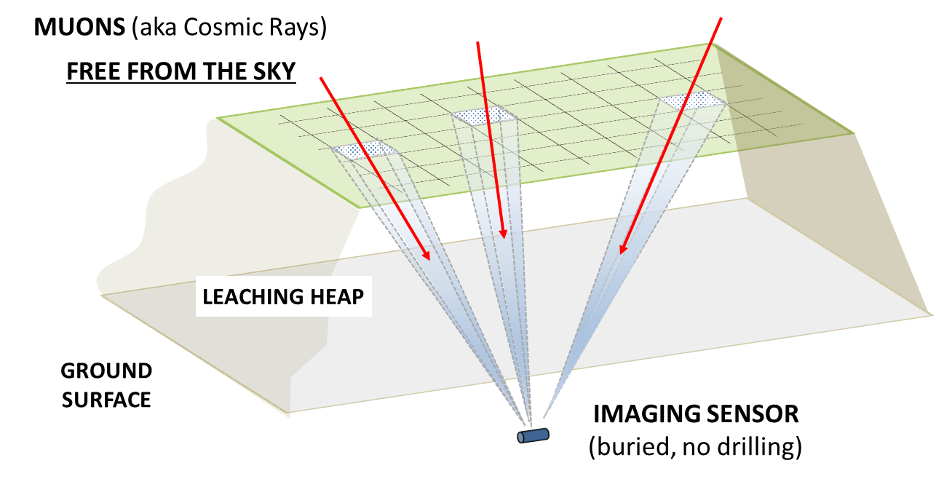What does the company Muon Vision do?
Our core technology is a nuclear imaging sensor that measures the bulk density of geophysical assets.
Our unique feature is that the sensor is buried under the object under study and thus it creates no interference. From there, it can also detect the migration of fluids in the pore space over time, e.g. quantify the amount of fluids added to a leaching heap.

Our transformational density mapping technology provide a continuous, near-real time measurement. This forms the basis of an advanced digitalization layer with which you can monitor the performance of the asset and control issues such as metal recovery or slope stability.
Our measurements provide time-lapse information every few days to few weeks, continuously, over the asset’s entire life.
The data can be represented by two kinds of maps:
- 2D: similar to taking a giant medical X-ray
- 3D: full asset tomography, similar to a CT scan
Our “Smart Heap” data set enables operators to optimize key process variables (e.g. leachant flow, irrigation layout, heap thickness, agglomeration parameters), and therefore maximize their recovery factor.
Our integrated system is based on:
- hardware: muon detecting sensors;
- software: a control panel showing near real-time density maps;
- data cloud: an edge-to-cloud digitalization platform.
Our deep-reading, non-invasive platform technology is uniquely suited to get to “smart digital mines” that are optimized in terms of process efficiency and safety.
By the way… what does “muon vision” mean?
The earth is continuously bombarded by nuclear fragments (aka cosmic rays), coming from space.
These, upon impacting with our atmosphere, generate a cascade of subatomic particles, including muons (a particle analogous to the better known electron), which reach the earth’s surface and penetrate deep underground. On average, about 14.5M of these highly energetic particles traverse every square meter on Earth every day, including our very own bodies – without us even noticing.
Atmospheric muons are in fact harmless: a natural, free and safe source of radiation able to penetrate deep underground.
Just as with medical X-rays, by detecting the flux of muons we can infer density maps of any object they traverse, including large volumes of rock.
